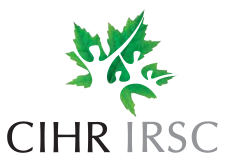Sustainability and Public Health Nutrition in Vancouver Schools
About This Brief
This research brief was prepared by the BC Food Web team, based on an article published in the journal Public Health Nutrition.
Introduction
School food programs have the potential to help incorporate healthy and sustainable eating into the everyday life of children, but we lack the assessment tools to study them well. Using Canada’s Food Guide as a guide to define healthy eating, this study sought to develop an evaluation tool called the School Food Environment Assessment Tools (SFEAT).
Objectives:
- Develop the School Food Environment Assessment Tool (SFEAT). The school food environment includes social and physical components, as well as teaching and learning about environmentally sustainable practices, including health policies.
- Characterize a sample of schools using a novel scoring system.
- Identify future opportunities for applying this approach to research and monitoring.
This study was part of and informed by the Think & Eat Green @School project, which strived to build healthier, more sustainable food systems through collaboration with the Vancouver Board of Education, the Centre for Sustainable Food Systems at the University of British Columbia, and various other partners.
Research Process
The methods for this project included three important phases: tool development and refinement, data collection, and domain development and scoring. Two versions of the School Food Environment Assessment Tool (SFEAT) were developed; one for elementary students (kindergarten to grade 7), the other for secondary school students (grades 8 to 12).
Thirty-three diverse schools were selected as a representative set of Vancouver’s public elementary and secondary schools. This ensured the participation of at least one elementary and secondary school from each of Vancouver’s six distinct sectors. Data collection included direct observation of each school’s physical food environment, an interview with a key stakeholder (i.e. food-service worker or teacher), and an interview with a school administrator (i.e. principal, vice principal).
After the data had been collected and reviewed, the following six key areas of interest (or domains) were identified:
- food gardens
- composting systems
- food preparation activities
- food-related teaching and learning activities
- availability of healthy foods
- the availability of environmentally sustainable food
Relevant questions regarding each domain were then used to score the health and environmental sustainability of school food systems from each school on a scale of zero to five. Questions included those such as “How important is environmental sustainability when making school meal planning or purchasing decisions?”, or “Is a composting programme/system in existence?”
Results
In Vancouver, SFEAT revealed that in 2011-2013 many schools had started to work towards environmentally sustainable and healthy food initiatives, although the uptake of initiatives varied widely between schools. The domains showing the highest levels of engagement were food gardens and composting systems, which were present in 75 per cent and 82 percent of schools sampled, respectively. The level of engagement in these areas likely reflected current trends across the city that gained momentum through inputs from school board partners and local grass-roots food system advocates. Food preparation facilities or related initiatives were present in some capacity at 91 percent of schools; over half of the schools had taken initial steps towards food preparation initiatives, while a third of the schools had food preparation incorporated as a regular activity. All but one school had some food-related teaching and learning within the classroom, although these activities had only recently been integrated into the classroom on a regular basis. Widespread availability of healthy, environmentally sustainable foods was lacking in most schools. This may be a reflection of the limited incentives for schools to choose sustainable options, as well as the ambiguous definitions, best practices, and benefits surrounding healthy and sustainable food choices. Overall findings suggest that schools in Vancouver have much room for improvement in all six food system environment domains.
Note: These findings were based on a sample of only public schools from Vancouver, and may not reflect trends outside of these schools. The SFEAT interviewees (e.g. school administration, etc.) spoke to certain aspects of the school food environment, but could not comment on all the food-related initiatives at their school.
Next Steps
As an emerging field, school food systems lack general assessment tools and common language to describe areas where schools are successful, and areas where they should be taking action. The SFEAT tool could be used in its current form to gain initial understanding of the level of engagement for each domain (e.g. compost, sustainability) and determine future actions. The tool can also be modified to better suit other local, regional, or national contexts.
Implications
Overall, some level of engagement was seen across all six of the school food environment domains in a sample of Vancouver public schools, with most development being seen in compost and gardening systems. Funding, training, support and advocacy will most likely be needed to more fully integrate programs and policies that provide healthy and environmentally sustainable foods. Future use of the SFEAT approach could contribute to an improved understanding of school food environments. This scoring system offers a practical approach to understand the state of a school’s engagement in healthy eating and environmentally sustainable food systems.
About This Research
The Funder of this study include The Social Sciences and Humanities Research Council of Canada - Think & Eat Green @School Project and The Canadian Institute of Health Research Operating Grant - Food Practices on School Days Study.
This brief is based on the following journal article:
Black, J. L., Velazquez, C. E., Ahmadi, N., Chapman, G. E., Carten, S., Edward, J., . . . Rojas, A. (2015). Sustainability and public health nutrition at school: Assessing the integration of healthy and environmentally sustainable food initiatives in Vancouver schools. Public Health Nutrition, 18(13), 2379-2391. doi:10.1017/S1368980015000531
Key Findings
- This study sought to develop an evaluation tool called the School Food Environment Assessment Tools.
- In Vancouver, SFEAT revealed that in 2011-2013 many schools had started to work towards environmentally sustainable and healthy food initiatives, although the uptake of initiatives varied widely between schools.
- The domains showing the highest levels of engagement were food gardens and composting systems.
- Funding, training, support and advocacy will most likely be needed to more fully integrate programs and policies that provide healthy and environmentally sustainable foods.



